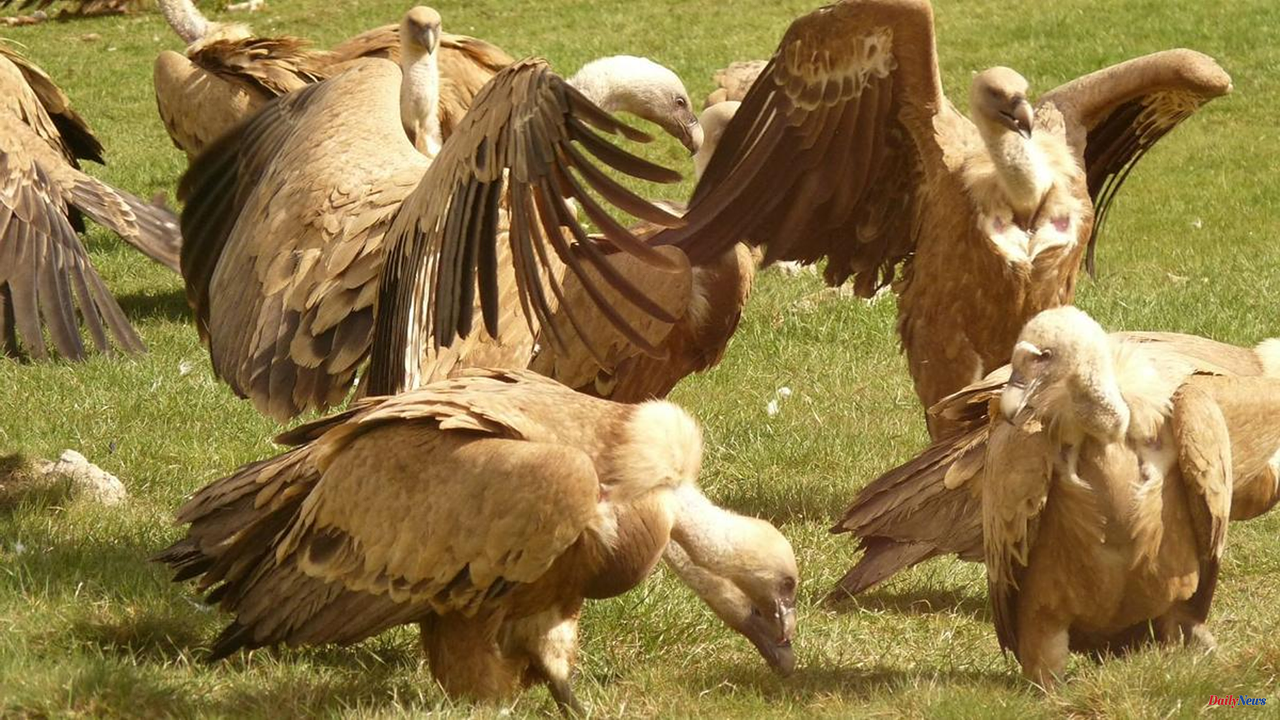The Foundation for the Conservation of the Bearded Vulture (FCQ) and the Government of Aragon have detected antibodies against the bird flu virus in seven of the eight griffon vultures captured in the Maestrazgo de Teruel as part of the Life Corredores Ibéricos pro Quebrantahuesos program.
The objective pursued was to mark the vultures with satellite devices so that they serve as sentinels for the presence of toxic products in the natural environment.
This information helps to protect the bearded vulture, especially in areas where specimens have been reintroduced within the aforementioned program, valid until 2027.
In the operation they were looking for poison and have found another threat to endangered birds, the H5N1 virus, which causes bird flu.
Subsequent veterinary checks carried out on the eight vultures before they were released again revealed that seven of them, healthy and virus-free at the time of capture, had antibodies.
This means that at some point they have been exposed to the H5N1 infection and have overcome it. It reveals not only that the bird flu virus is already circulating among them, but that there are individuals capable of overcoming the disease and acquiring immunity.
This circumstance gives rise to the hope that the same could happen with bearded vultures.
According to the FCQ, in recent months the death of at least three bearded vultures due to bird flu has been confirmed, one of them in the Córdoba zoo and another two in Navarra. In addition, other cases are suspected in the central Spanish Pyrenees.
Said Foundation has recently marked six griffon vultures in Moncayo, whose samples are pending analysis.
If in this case they obtain results above 80% with signs of bird flu, they assure that it will be possible to confirm that the virus is already in wildlife.
It is estimated that 80% of the griffon vultures in all of Europe live in the Iberian Peninsula and in Aragon there are 6,000 breeding pairs.
They travel hundreds of kilometers and gather in middens to eat, at which point they can transmit the virus.
Last February some cases of bird flu in seagulls were detected in the city of Zaragoza.
The Green Unit of the City Council, in coordination with the Municipal Institute of Public Health, collected some specimens of dead or sick gulls in which bird flu was detected.
It is believed that the birds could have arrived in the Aragonese capital from the north and east of the peninsula as a result of the storms and low temperatures recorded in January.
The City Council launched, under the coordination of the Municipal Institute of Public Health, a series of measures to prevent infections in humans.
Likewise, it reinforced the signage at points where human proximity to birds is common, such as ducks and swans, in the Water Park or the Imperial Canal. These posters explain the importance of not feeding the animals and not touching or handling the birds.
According to the criteria of The Trust Project












